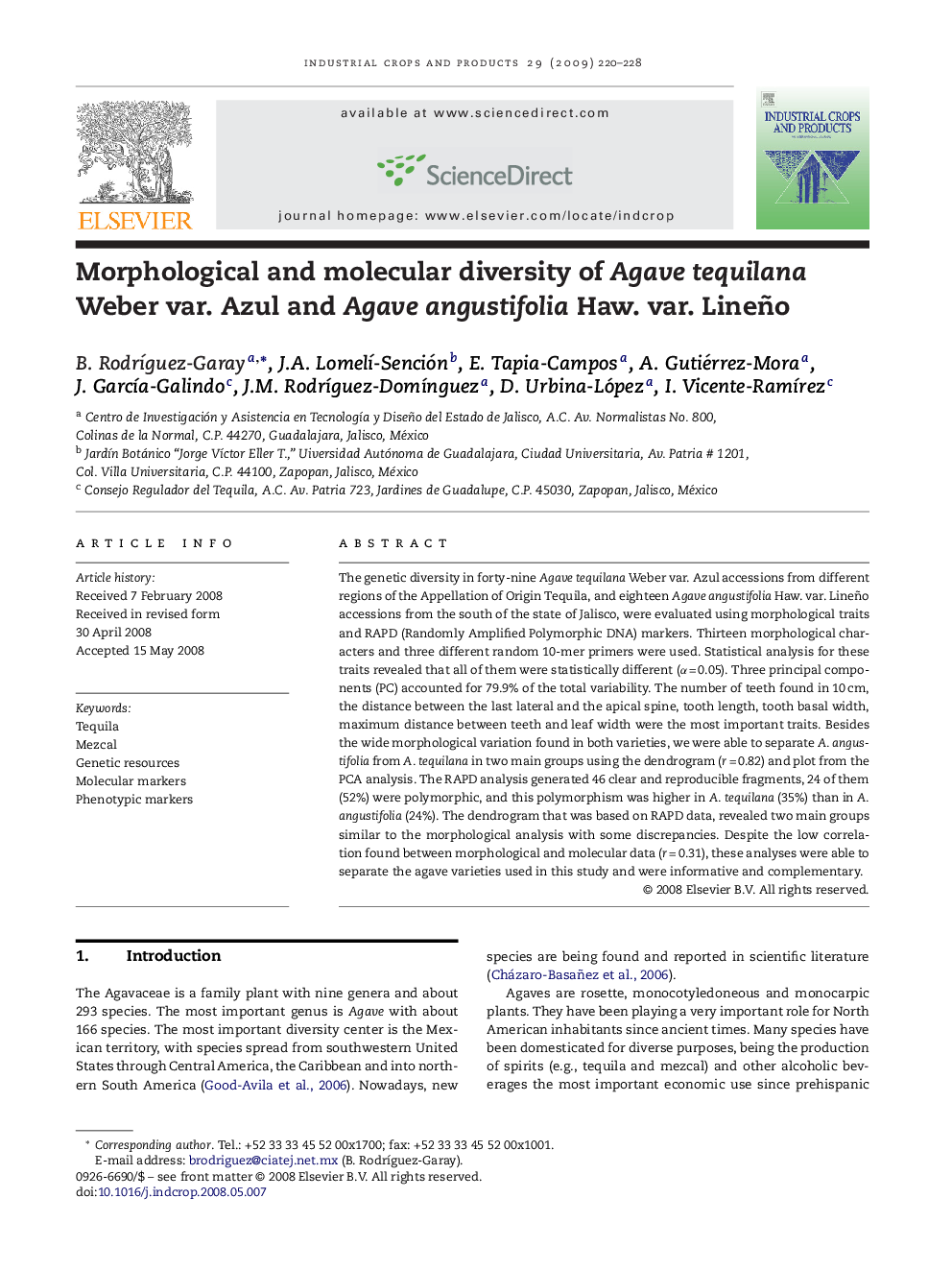| Article ID | Journal | Published Year | Pages | File Type |
|---|---|---|---|---|
| 4515188 | Industrial Crops and Products | 2009 | 9 Pages |
The genetic diversity in forty-nine Agave tequilana Weber var. Azul accessions from different regions of the Appellation of Origin Tequila, and eighteen Agave angustifolia Haw. var. Lineño accessions from the south of the state of Jalisco, were evaluated using morphological traits and RAPD (Randomly Amplified Polymorphic DNA) markers. Thirteen morphological characters and three different random 10-mer primers were used. Statistical analysis for these traits revealed that all of them were statistically different (α = 0.05). Three principal components (PC) accounted for 79.9% of the total variability. The number of teeth found in 10 cm, the distance between the last lateral and the apical spine, tooth length, tooth basal width, maximum distance between teeth and leaf width were the most important traits. Besides the wide morphological variation found in both varieties, we were able to separate A. angustifolia from A. tequilana in two main groups using the dendrogram (r = 0.82) and plot from the PCA analysis. The RAPD analysis generated 46 clear and reproducible fragments, 24 of them (52%) were polymorphic, and this polymorphism was higher in A. tequilana (35%) than in A. angustifolia (24%). The dendrogram that was based on RAPD data, revealed two main groups similar to the morphological analysis with some discrepancies. Despite the low correlation found between morphological and molecular data (r = 0.31), these analyses were able to separate the agave varieties used in this study and were informative and complementary.
